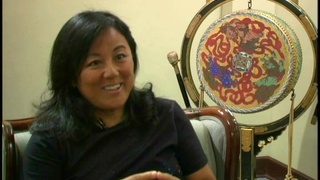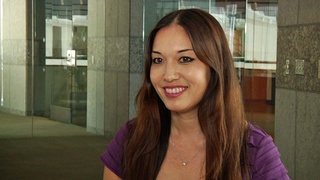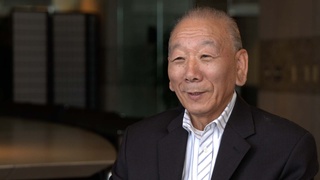Entrevistas
Japanese-Peruvian Cuisine (Japanese)
(Japanese) There is something called Japanese-Peruvian cuisine. It’s interesting. Obviously, the first-generation Japanese-Peruvians at the time didn’t have much, but for festivals or birthdays or weddings, they of course wanted to make something like Japanese food. However, they didn’t have many ingredients, but with an attitude of “hey, let’s make do with what we’ve got”, they made many things. But they really took great pains with it. And they used a lot of ingenuity. So now we have that type of cooking.
And you can really see traces of that ingenuity by the Japanese-Peruvians in that cooking. For example, if they didn’t have mochi rice, they’d make something like mochi using cassava. And back when they didn’t have umeboshi (pickled plums), they’d get something that tasted just like a plum from the jungle…Those were legumes – the flower of a legume similar to lupin. If you cure it in salt, it really does take like a plum. And it’s said they ate that in place of plums. And today, if you ask what became of that, it’s a separate item from plums. If you eat it, it tastes like shiba-zuke (salted rape blossoms) from Kyoto. Something like that doesn’t exist in Japan. So they use things like that in Japanese-Peruvian cooking.
Furthermore, if you go to the countryside, the Japanese-Peruvians of course invite you over. When that happens, you’ll find remnants of the past… Take shiitake mushrooms, for example. They used to be more expensive than silver – dried shiitake, that is. When silver was around $5 an ounce, if you were talking about an ounce of dried shiitake, it might be around $30. So that was something you only ate on special occasions. And they probably ate dried shiitake because it didn’t go bad quickly. On these special occasions…in other words, on birthdays, weddings…on those special days, they’d have shiitake, as well as harusame noodles. Then, they’d boil the food. Even now, if you go to the countryside, you’ll find that kind of cooking.
Fecha: April 18, 2007
Zona: Lima, Peru
Entrevista: Ann Kaneko
País: Watase Media Arts Center, Japanese American National Museum
Explore More Videos

¿La no integración se debe a la desconfianza por lo que pasó en la Segunda Guerra Mundial?
(n. 1962) Poeta peruano, descendiente de Okinawa

Soy japonés, soy peruano… ¿qué soy?
(n. 1962) Poeta peruano, descendiente de Okinawa


Embajadora de Buena Voluntad
(n. 1962) Poeta peruano, descendiente de Okinawa

Historias de inmigrantes
(n. 1962) Poeta peruano, descendiente de Okinawa




Culture is an important part of one's identity
Periodista judío japonesa-americana

Difficulty of spreading authentic sushi (Japanese)
(n. 1949) Chef de Sushi; Propietario de “Sushi Gen”, de Little Tokyo de Los Angeles

Teaching how to eat sushi (Japanese)
(n. 1949) Chef de Sushi; Propietario de “Sushi Gen”, de Little Tokyo de Los Angeles

Okinawan Americans
Okinawense estadounidense cuyos padres son de Perú.

General reasons why people left Japan for Peru
Okinawense estadounidense cuyos padres son de Perú.

Parents identification as Peruvian Okinawan
Okinawense estadounidense cuyos padres son de Perú.

Prejudice against Okinawans from mainland folks
Okinawense estadounidense cuyos padres son de Perú.
